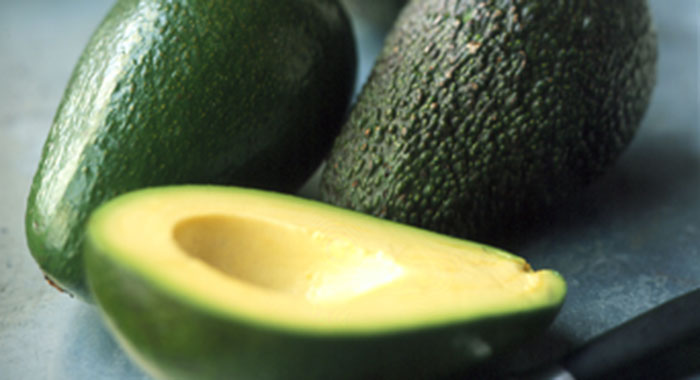
Pronounce it: av-oh-car-doh
Although it’s technically a fruit, the mild-flavoured avocado is used as a vegetable. Native to central America, there are four main varieties: Hass (considered to be the best), which has a dark, knobbly skin; the pear-shaped, smooth-skinned Ettinger and Fuerte (of which a tiny, baby-sized variety is also available); and the more spherical Nabal.
Avocado is also sometimes known as a butter pear, because of its unctuous flesh, or as alligator pear because of the Hass variety’s textured skin. Highly nutritious, containing vitamin E, iron, potassium and niacin, it’s also unique among fruits in that it contains oil – but most of it is the good, monosaturated type.
Read our guide on the health benefits of avocado.
Availability
All year round.
Choose the best
Go for an unblemished skin, and flesh that gives slightly if squeezed gently (though it shouldn’t actually be soft). If you buy hard ones you can ripen them quickly by putting them in a brown paper bag with a banana (keep out of the fridge).
Prepare it
Using a small, sharp knife, run a blade all the way around the avocado, from top to bottom. Make sure you cut in till the blade meets the stone. Twist the two halves in opposite directions to separate them. To remove the stone, ease it out with a spoon or, using a firm, swift action, stick the length of a sharp knife into it and lever out. Avocado flesh discolours rapidly on exposure to the air: to prevent this, brush with lemon juice.
Store it
Once ripe, keep them in the fridge.
Cook it
Avocados are best used raw, not cooked. Halve, stone and serve with olive oil and and balsamic vinegar or vinaigrette, or fill the hollow with prawn cocktail. Mash with tomatoes, garlic and chillies to make the classic Mexican dip, guacamole; or slice thinly with tomato and mozzarella drizzled with olive oil to make an Italian tricolore salad.
Be the first to comment on "Avocado"